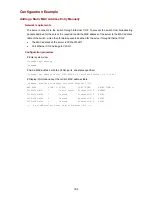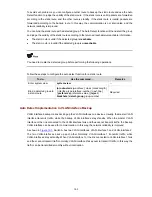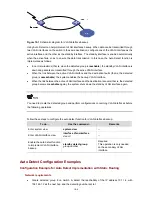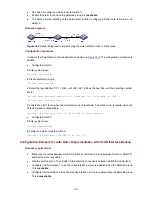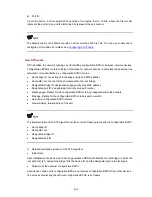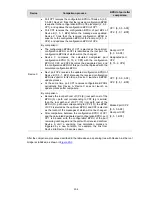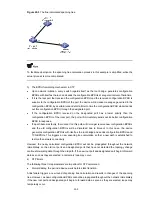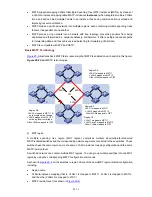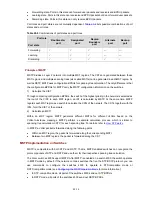
20-1
20
MSTP Configuration
Go to these sections for information you are interested in:
z
Overview
z
MSTP Configuration Task List
z
Configuring Root Bridge
z
Configuring Leaf Nodes
z
Performing mCheck Operation
z
Configuring Guard Functions
z
Configuring Digest Snooping
z
Configuring Rapid Transition
z
Configuring VLAN-VPN Tunnel
z
MSTP Maintenance Configuration
z
Enabling Trap Messages Conforming to 802.1d Standard
z
Displaying and Maintaining MSTP
z
MSTP Configuration Example
z
VLAN-VPN Tunnel Configuration Example
Overview
As a Layer 2 management protocol, the Spanning Tree Protocol (STP) eliminates Layer 2 loops by
selectively blocking redundant links in a network, and in the mean time, allows for link redundancy.
Like many other protocols, STP evolves as the network grows. The later versions of STP are Rapid
Spanning Tree Protocol (RSTP) and Multiple Spanning Tree Protocol (MSTP). This chapter describes
the characteristics of STP, RSTP, and MSTP and the relationship among them.
Spanning Tree Protocol Overview
Why STP
Spanning tree protocol (STP) is a protocol conforming to IEEE 802.1d. It aims to eliminate loops on data
link layer in a local area network (LAN). Devices running this protocol detect loops in the network by
exchanging packets with one another and eliminate the loops detected by blocking specific ports until
the network is pruned into one with a tree topology. As a network with a tree topology is loop-free, STP
prevents packets in it from being duplicated and forwarded endlessly and prevents device and network
performance degradation caused by data loops.
In the narrow sense, STP refers to IEEE 802.1d STP; in the broad sense, STP refers to the IEEE 802.1d
STP and various enhanced spanning tree protocols derived from that protocol.
Protocol Packets of STP
STP uses bridge protocol data units (BPDUs), also known as configuration messages, as its protocol
packets.








